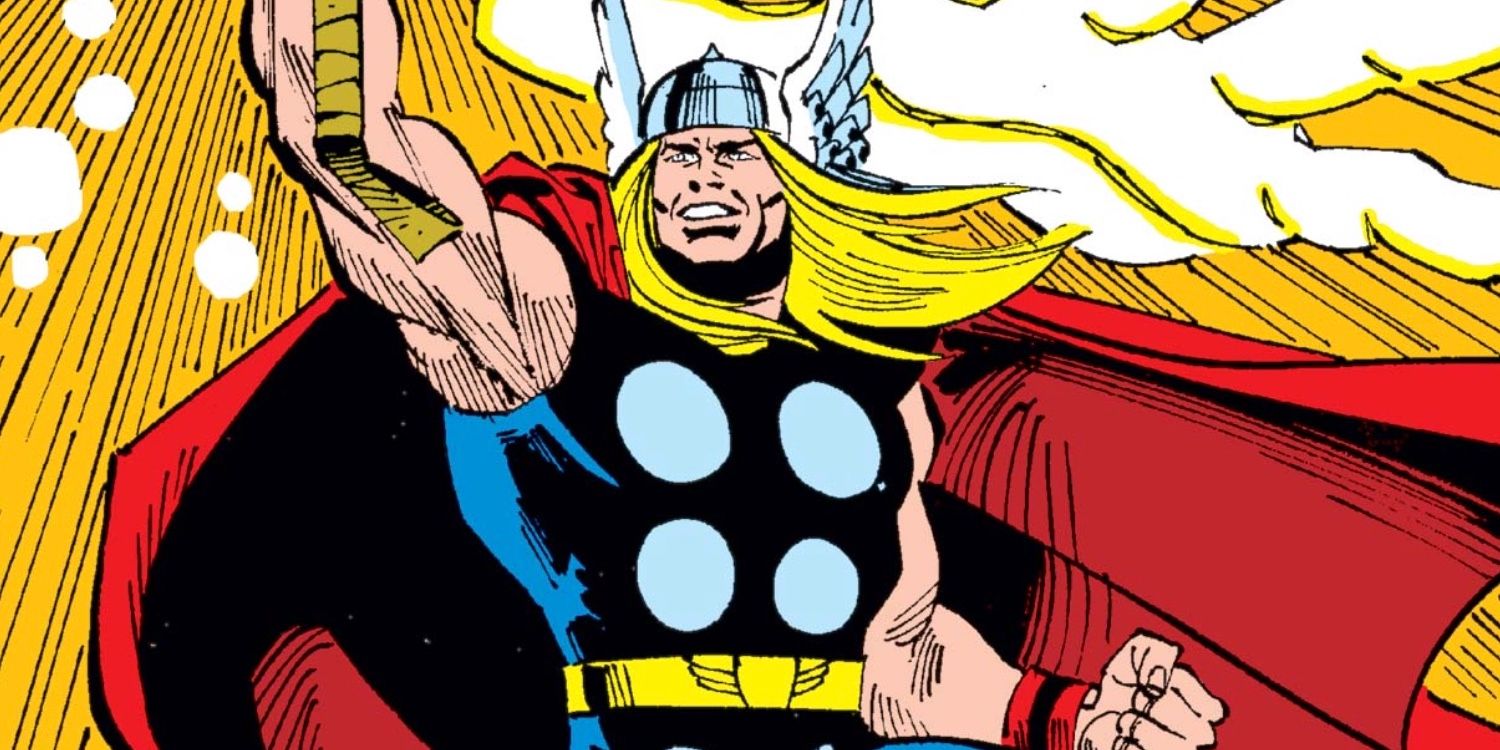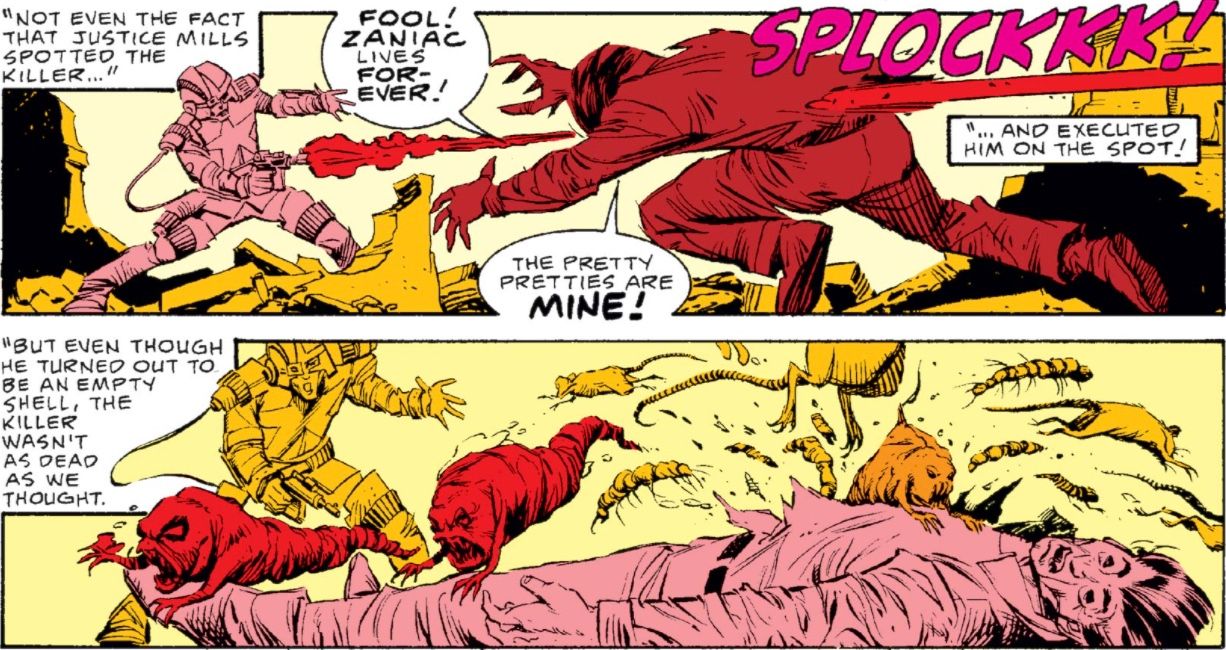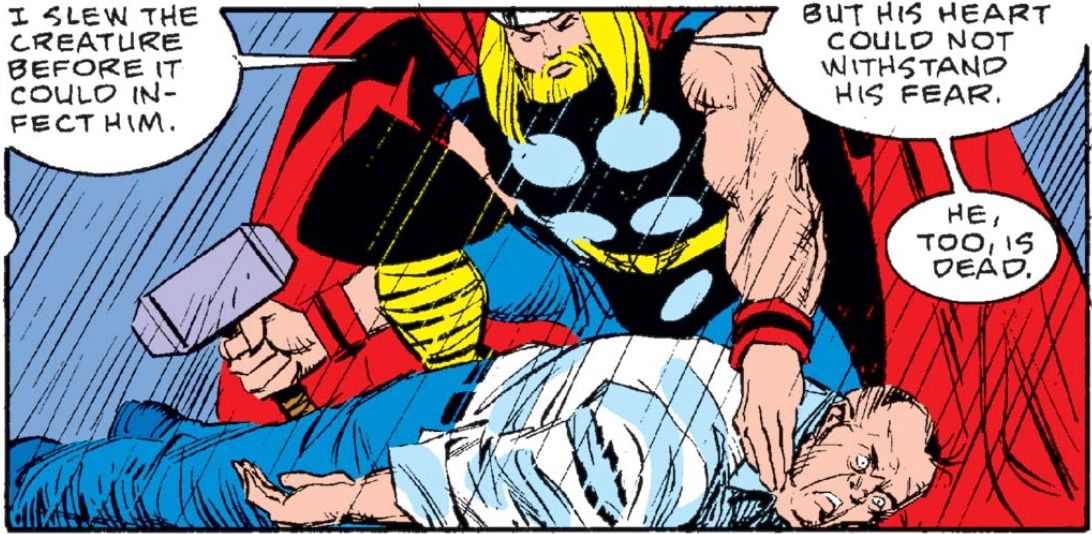There is never a dull moment in Thor's intergalactic adventures throughout Marvel Comics. Whether it be teaming up with Beta Ray Bill or being turned into a frog by his mischievous brother Loki, Thor Odinson has seen it all in his millennium-spanning lifetime. Still, one moment in his cosmic journey stands out in its utter strangeness.
During Walter Simonson's seminal run on The Mighty Thor from 1983 to 1987, Thor faced some of his most iconic villains such as Hela, Surtur, and Malekith the Dark Elf. But one villain in particular stands out from the crowd. Not only is he not from Norse mythology, but he seems straight out of Ridley Scott's 1979 sci-fi horror film, Alien. And if that wasn't bad enough, he's also the perpetrator of some of the most perplexing unsolved crimes in history - it's Jack the Ripper.
Zaniac, the villain in question, was revealed to have been Jack the Ripper in Thor #372, and in an arc spanning two issues, proves himself to be one of Thor's most repulsive foes. Jack the Ripper was a serial killer in East London who brutally murdered at least five women in 1888, but was never identified or apprehended for his crimes. A fitting characterization for the monster that was Jack the Ripper, Zaniac is not a human being, but actually a collection of parasitic vermin who use human male bodies as their host. When the host body is killed, the vermin burst from the torso of their host and run away to find another body, just like the infamous "Chestburster" scene in Alien.
And that is not even the grossest part about Zaniac. Worse, Zaniac is driven by his thirst for killing women with knives that he generates from his hands. This has proven to be especially problematic in the future, when Zaniac murders a prominent female politician in the middle of a speech, sending the world spiraling into World War VIII. In an effort to try to halt humanity's impending destruction, Justice Peace was sent from the future to try to kill Zaniac in the past and eventually teams up with Thor. Due to the fact that he is a parasite instead of an actual individual being, Zaniac is extremely hard to kill, which explains why he was responsible for one of the most heinous crime sprees of the nineteenth century.
As fantastic as this particular Thor story is, it is a pointed remark on how violence and hatred against women persists in the past, present, and future. Simonson's story - with pencils by Sal Buscema, inks by Albert Blevinson, letters by John Workman, and colors by Max Scheele - paints gender-based violence as a parasite that must be eradicated in order to save humanity's future. Considering that Zaniac is not a single individual so much as a collection of vermin that burrow into the body of their host, infecting men across the centuries, the nature of the evil in the story crosses into much more disturbing territory. By representing Zaniac as a parasite, Simonson effectively makes the statement that even if a hero eliminates a particularly hateful individual, the seeds of that hate will continue to fester elsewhere unless it is destroyed from its very source.
While Thor stories from this time period are some of Marvel's most cosmic, the evil in Thor #371 and #372 is all too real. Perhaps one of the greatest takeaways of Thor's fight with Zaniac is that the parasite itself violently destroys the body of the host at the point of death, illustrating how hate and violence are ultimately self-destructive. The issues graphically render this through the visual references to Alien's chestburster scene, providing one of the most shocking moments in Thor's publication history. Make no mistake, while this particular evil was defeated by Thor, it certainly was not the end to the God of Thunder's brushes with the universe's most unsavory aspects.



